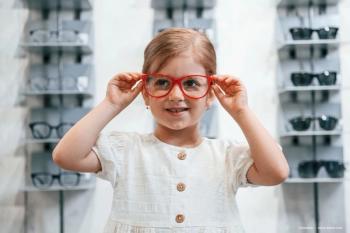
- Ophthalmology Times: April 1, 2021
- Volume 46
- Issue 6
Editorial: Ophthalmology during COVID-19
A residency applicant shares his perspective on the pandemic’s impact.
Early in 2020, the “Year of the Eye,” many of us had illusions of grandeur. My fellow applicants and I envisioned a smooth ascent into residency, following the blueprint laid out by classes before us.
Instead, we were blindsided by a pandemic that sent the world reeling and turned attentions toward larger issues than our budding careers.
Out of this adversity, ophthalmology applicants were given a historic opportunity: We would be among the first batch of US medical students to apply to residency during the COVID-19 crisis.
As a member of this illustrious “COVID class,” I hope my experience in the trenches will be of some use to future applicants.
In midspring the authorities at the Association of University Professors of Ophthalmology (AUPO) and San Francisco Match (SF Match) released a 3-page document to every medical school and residency program in the country.¹
The missive was kept short but sweet, addressing the revised application timeline, away rotations, dean’s letters, step 2 requirements, and virtual interviews. While many unknowns remained, their framework put some order to the chaos.
Still, all bets are off when embarking into a whirlwind, and a few points of contention arose.
For instance, what do we do about interview limits? Traditionally there has not been a maximum on how many one can accept or attend. Superstars could enjoy 30 interviews, schedule and wallet permitting. But this season, a “cap” was enforced at 20 interviews attended.
As the season progressed, a method behind the madness emerged. Self-reported data from OphthoMatch Google Docs, an anonymous forum organized by applicants, showed that a small cohort was garnering a large number of interviews while the rest were below average compared with past years.
This asymmetry is proof positive that a cap may be beneficial to maintain parity.
Another question was how would “homeless applicants” be affected by going virtual? My school has no ophthalmology residency, and a random sampling of 20 US (MD and DO) medical schools reveals that approximately 35% have no home program.
Recommendations from AUPO and the Electronic Residency Application Service, or ERAS, suggested allowing away rotations for the homeless and having those with home programs rotate internally.
The new interview format was another monkey wrench thrown into the mix. SF Match unveiled a number of innovations, including an integrated interview platform and the ability to attend up to 2 interviews per day.
Although travel time and money were saved, 2-per-day and multiday interviews were draining in a different way than cross-country travel.
How poetic that in the Year of the Eye it was ophthalmology that ushered in a new format of residency selection.
Although a few glitches are bound to occur with any disruptive idea, everyone from leadership to my medical student colleagues took this challenge in stride.
I am confident that with successive cycles and forthcoming data, we will continue to improve upon this inaugural season by taking into consideration constraints like lack of home programs, reducing cognitive load, and determining ideal interview caps.
Congratulations to this year’s class, and best of luck to the next!
About the author
Roger K. Henry, MBS, BS
e: [email protected]
Henry is a resident at the Rutgers Robert Wood Johnson Medical School in New Brunswick, New Jersey.
--
References
1. Medical student resources. Association of University Professors of Ophthalmology. Updated May 8, 2020. https://aupo.org/programs-services/medical-students
2. Bailenson J. Nonverbal overload: a theoreticalargument for the causes of Zoom fatigue.Technology, Mind, and Behavior. 2021;2(1). doi:10.1037/tmb0000030
Articles in this issue
over 4 years ago
Telemedicine ushers in new chapter in eye careover 4 years ago
Should nonclinicians inject dexamethasone implants?over 4 years ago
Eliminating the potential land mines in glaucoma surgeryover 4 years ago
Unplugging the clogged drain in glaucomaover 4 years ago
ARVO sets stage for virtual eventNewsletter
Don’t miss out—get Ophthalmology Times updates on the latest clinical advancements and expert interviews, straight to your inbox.













































.png)


